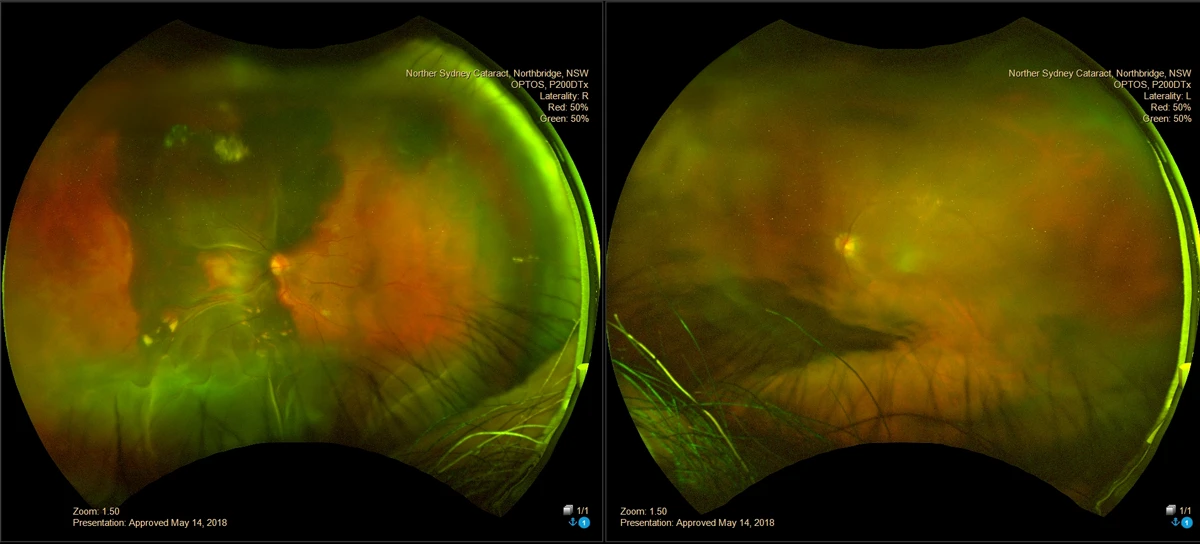60 Strathallen Avenue, Northbridge NSW
Monday to Friday - 9am to 5pm
Retinal Detachment
Retinal detachment is a serious eye condition where the thin layer of light-sensitive tissue at the back of the eye separates from its underlying supportive tissue. Retinal detachment is considered a medical emergency and requires immediate attention.
What causes it?
Retinal detachment can occur due to a variety of factors.
As we age, the vitreous, a gel-like substance inside the eye, can shrink and pull away from the retina, leading to thinning and increased risk of detachment. Retinal tears or holes can also cause detachment, as they allow fluid to seep underneath the retina, lifting it away from its underlying tissue. Trauma, such as blunt force or penetrating injuries to the eye, is another common cause. Certain eye conditions, including high myopia (nearsightedness), diabetic retinopathy, and complications from previous eye surgeries, can also increase the risk. Additionally, individuals with a family history of retinal detachment may have a genetic predisposition to developing this condition.
Symptoms
Symptoms may develop suddenly and include:
- Flashes of light in one or both eyes
- Sudden appearance of floaters (small spots or strands that drift through your vision)
- A shadow or curtain-like effect over part of your visual field
- Blurred or reduced peripheral vision
- Loss of central vision, if the macula (central retina) is involved
If you experience any of these symptoms, seek medical care immediately.

Retinal Detachment
Treatment
The type and urgency of treatment depend on the severity and location of the detachment.
- Laser Photocoagulation or Cryotherapy
Used for small retinal tears or holes. These treatments seal the retina to the underlying tissue and prevent detachment. - Pneumatic Retinopexy
A gas bubble is injected into the eye to press the retina back in place, followed by laser or cryotherapy. - Scleral Buckling
A silicone band is placed around the eye to relieve traction on the retina. - Vitrectomy
Removal of the vitreous gel and repair of retinal tears, often combined with gas or silicone oil placement.
Vision can take several weeks to months to stabilise following retinal detachment surgery. In some cases, particularly when the macula, the central part of the retina responsible for sharp vision, was detached, full visual recovery may not be possible. However, success rates for the procedure are generally high, especially when the detachment is diagnosed and treated early.
If you have a sudden appearance of floaters or decrease in your vision, it is a medical emergency that requires immediate attention. Please call 000 or visit your nearest emergency department.
For appointments and enquiries, please phone 02 9958 0552
Monday to Friday 9am - 5pm
© 2015– Northern Sydney Cataract | Privacy Policy | Disclaimer | Website by:
